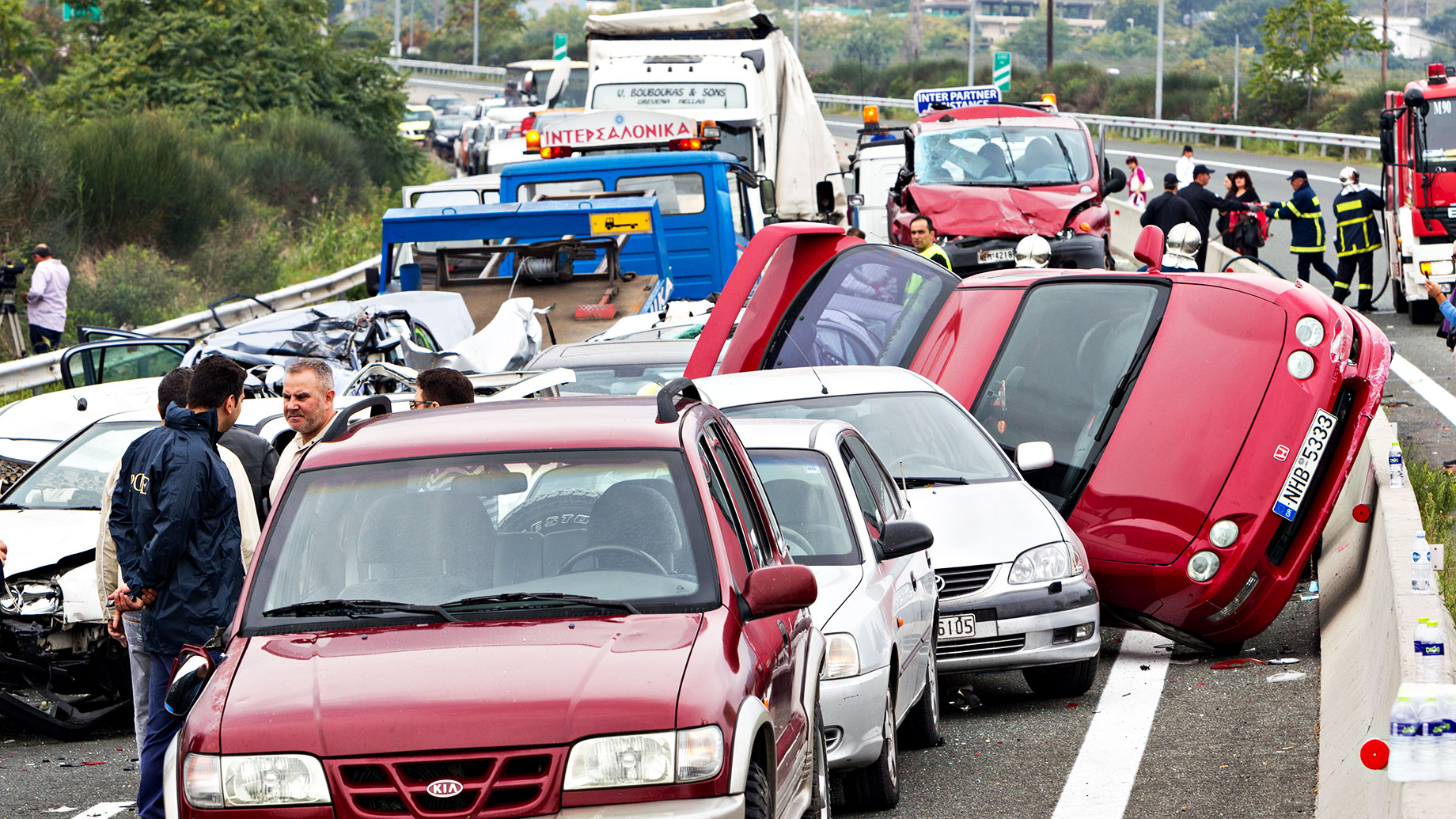
Multi-car collisions are among the most complicated accidents on the road. Unlike a typical two-vehicle crash, a pileup involves multiple impacts, several points of potential negligence, and a series of events that unfold rapidly. When three, four, or even a dozen vehicles collide in sequence, determining who is responsible (or more accurately, how responsibility is shared) requires careful investigation and an understanding of how fault works in chain-reaction accidents.
Why Multi-Car Pileups Are So Complex
In a two-car collision, legal fault may be relatively clear. One driver runs a red light, rear-ends another vehicle, or fails to yield. But in a pileup, a single crash can trigger multiple secondary collisions, and different drivers may contribute in various ways. One driver might brake suddenly, another might follow too closely, and another could be distracted at the worst possible moment.
Road conditions, visibility, and weather can add to the complexity. Icy roads, dense fog, or sudden traffic slowdowns may play a role in how events unfold. Because so many variables exist, assigning fault usually requires more than just witness statements. Investigators look at physical evidence, vehicle damage, crash reconstruction data, and sometimes video footage to understand who triggered the chain reaction and whether multiple drivers share responsibility.
Understanding Chain-Reaction Dynamics
A chain-reaction accident typically begins with an initial collision. That impact causes vehicles behind to crash as they react to the unfolding event. In many cases, drivers at the front of the line are not at fault for the collisions behind them; instead, responsibility often lies with those who fail to brake safely or maintain proper distance.
Rear-end collisions are especially common in these scenarios. Drivers are expected to leave enough space to stop safely if the vehicle ahead suddenly brakes. If a car is pushed forward by another vehicle from behind, determining whether the driver in front contributed to the crash, or is simply a victim, becomes an important part of fault evaluation.
Investigators also consider timing. Were collisions nearly simultaneous, or did one clearly trigger another? That distinction can affect how liability is allocated among multiple drivers.
Evidence Used to Determine Fault
Fault determination relies heavily on evidence. Witness statements and police reports provide context, but physical evidence often carries the most weight. Investigators may examine skid marks, road debris, and vehicle data recorders to reconstruct events. Damage patterns can reveal impact direction and force, helping determine which collisions occurred first and which resulted from earlier impacts.
Traffic cameras, dash-cam footage, and surveillance video from nearby businesses increasingly play a role as well. These sources help clarify who braked, who swerved, and whether drivers responded appropriately to changing conditions. Combined with expert analysis, they form a clearer picture than eyewitness recollections alone, which can be unreliable in chaotic situations.
Negligence and Driver Responsibility
At the core of fault determination is negligence: did one or more drivers fail to exercise reasonable care? Common negligent behaviors in pileups include following too closely, speeding, distracted driving, and failing to respond appropriately to weather or traffic conditions.
Even if one driver initiates the chain reaction, others can still share fault. A driver who is texting may not brake in time to avoid joining the collision. Someone driving too fast for icy conditions may slide into the pileup, worsening it. Multi-car accidents rarely stem from a single poor decision; more often, they result from layered mistakes by multiple motorists.
Comparative Fault and Shared Liability
Because multiple drivers can contribute to a pileup, many cases involve comparative fault. Under comparative fault systems, each driver’s degree of responsibility is assessed, and damages are allocated based on that proportion. If one driver is found 70 percent at fault and another 30 percent, each pays based on their share of responsibility.
Some states have modified comparative negligence rules, which bar recovery if a driver is more than 50 or 51 percent at fault. Others follow pure comparative negligence, allowing recovery even if a driver bears most of the blame, though compensation is reduced accordingly.
This approach recognizes that roadway safety is a shared responsibility. A pileup rarely has a single villain; instead, multiple drivers may have made decisions that contributed to the outcome.
Understanding Complex Car Crashes
Determining fault in a multi-car pileup requires careful analysis, attention to detail, and an understanding of how chain-reaction accidents unfold. While these collisions are complex, the guiding principle remains the same as in any negligence case: liability follows responsibility.
Investigators can evaluate driver behavior, road conditions, timing, and physical evidence to determine how the crash began and who contributed to its spread. And because multiple parties often share fault, comparative negligence plays a major role in shaping outcomes and compensation.
For those involved in a pileup, patience, documentation, and legal support can make a meaningful difference. With clear evidence and a strong understanding of liability principles, injury victims can pursue fair compensation and move forward after a chaotic and stressful event.